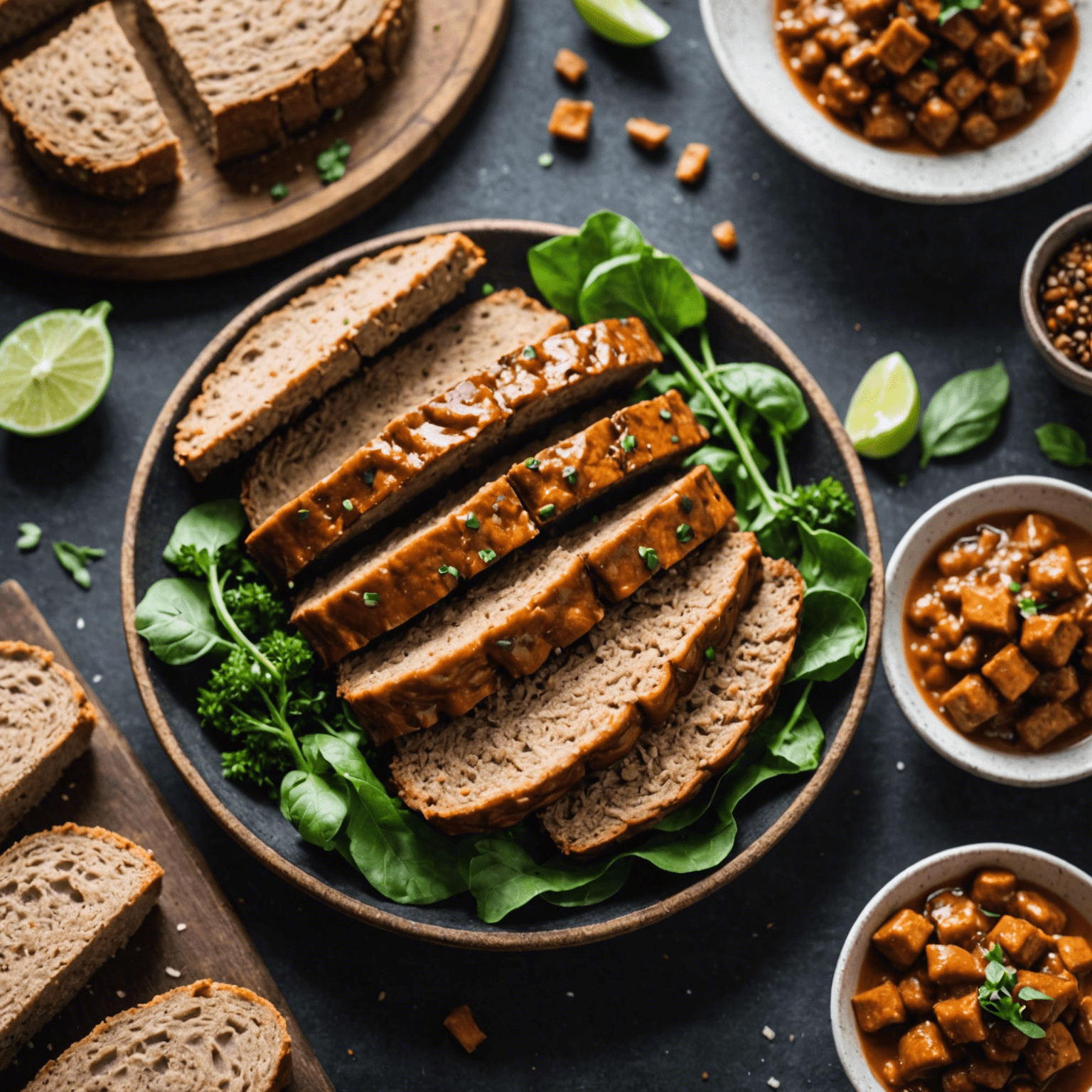For vegans and vegetarians who miss the satisfying mouthfeel of meat, seitan is a godsend.
But what is seitan, you may ask? Pronounced “say-tahn,” it’s a plant-based protein made from wheat gluten. It has a chewy, savory texture that can mimic everything from chicken to beef.
The Meaty Texture of Seitan
Seitan’s meat-like quality isn’t just a happy accident. It’s because of wheat gluten, the elastic protein found in wheat dough. When mixed with water and kneaded, the gluten forms a sort of “meat” that can be seasoned and cooked in various ways.
While seitan may never fully replicate the taste or nuance of actual meat, it gets pretty darn close in terms of mouthfeel. Some vegans even prefer it because it’s free of cholesterol and doesn’t come with the ethical issues of eating animal products.
Nutritional Benefits of Seitan
One 3-ounce (85-gram) serving of seitan contains about 21 grams of protein, making it one of the most protein-rich plant-based foods out there. It’s also low in fat and carbohydrates, so it won’t weigh you down.
Because seitan is so versatile, it can be used in a variety of ways as a meat replacement. You can slice it up as a deli meat, cut it into strips for stir-fries or stews, or serve it as a burger or meatball.
How to Make Seitan
While you can buy seitan at many health food stores and some supermarkets, it’s pretty easy to make at home. Here’s a simple recipe:
- 1 1/2 cups vital wheat gluten
- 1/3 cup nutritional yeast
- 1 tsp onion powder
- 1 tsp garlic powder
- 1 tsp paprika
- 1 tsp salt
- 1/4 cup soy sauce
- 1/4 cup vegetable broth
- 1 tbsp vegetable oil
- 1 1/2 cups water
In a large bowl, whisk together the vital wheat gluten, nutritional yeast, onion powder, garlic powder, paprika, salt, soy sauce, vegetable broth, vegetable oil, and water until it forms a dough.
Knead the dough on a floured surface for about 5 minutes, until it’s elastic and smooth. Then, you can cut it into whatever shape you’d like.
For instance, if you want to make seitan chicken cutlets, roll the dough out to about 1/2-inch thickness, cut it into the desired size, and season both sides with salt, pepper, garlic powder, and paprika.
Place the cutlets in a large pot with enough water to cover them by about 1 inch. Bring the water to a boil, then reduce the heat to a simmer and cook the seitan for about 30 minutes, until it’s chewy and firm.
Drain the seitan and let it cool before serving. You can also refrigerate it and reheat it in the oven or on the stovetop as needed.
For a more savory version of seitan, you can add liquid smoke or tomato paste to the dough. You can also add other seasonings like thyme, rosemary, or ginger, depending on what you plan to use the seitan for.
Cooking with Seitan
Once you have your seitan, the possibilities are endless. You can:
- Make seitan burgers or meatballs and serve them with tomato sauce and veggies
- Slice up seitan deli style and put it on a sandwich
- Cube seitan and use it in a stir-fry
- Make seitan meatloaf or sausages
- Grill seitan skewers with veggies
- Make seitan “chicken” nuggets or “bacon”
Seitan also works well in pasta dishes or rice bowls, especially when you want a heartier meal.
Seitan vs. Other Meat Alternatives
If you’re a fan of tofu or tempeh, you may be wondering where seitan fits in. While all three are plant-based sources of protein, they have different textures and uses.
Tofu and tempeh are made from soybeans, while seitan is made from wheat gluten. Tofu has a soft, silken texture that can be firm or extra firm, while tempeh has a nutty, hearty texture. Seitan, as we’ve discussed, has a meaty texture.
Plant-based meat alternatives like the Beyond Burger or Impossible Burger are made from a base of soy or pea protein, and are designed to mimic the taste and texture of beef. Seitan can also be used to make plant-based meat, but it’s not as commonly marketed that way.
While all of these foods can make good vegetarian or vegan protein sources, seitan is one of the most similar in texture to meat, which makes it a popular choice for people who miss the mouthfeel of animal products.
Troubleshooting and Tips
If your seitan turns out tough or rubbery, it may be over-kneaded or overcooked. Knead it just until it’s smooth and elastic, and don’t overcook it. If it’s still too tough, you can try soaking it in broth or marinade to soften it up.
Seitan can be stored in the refrigerator for up to a week, or in the freezer for up to 3 months. To reheat it, you can slice it up and pan-fry it in a bit of oil, or warm it up in the oven.
